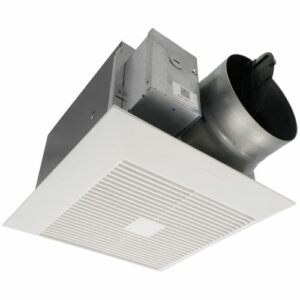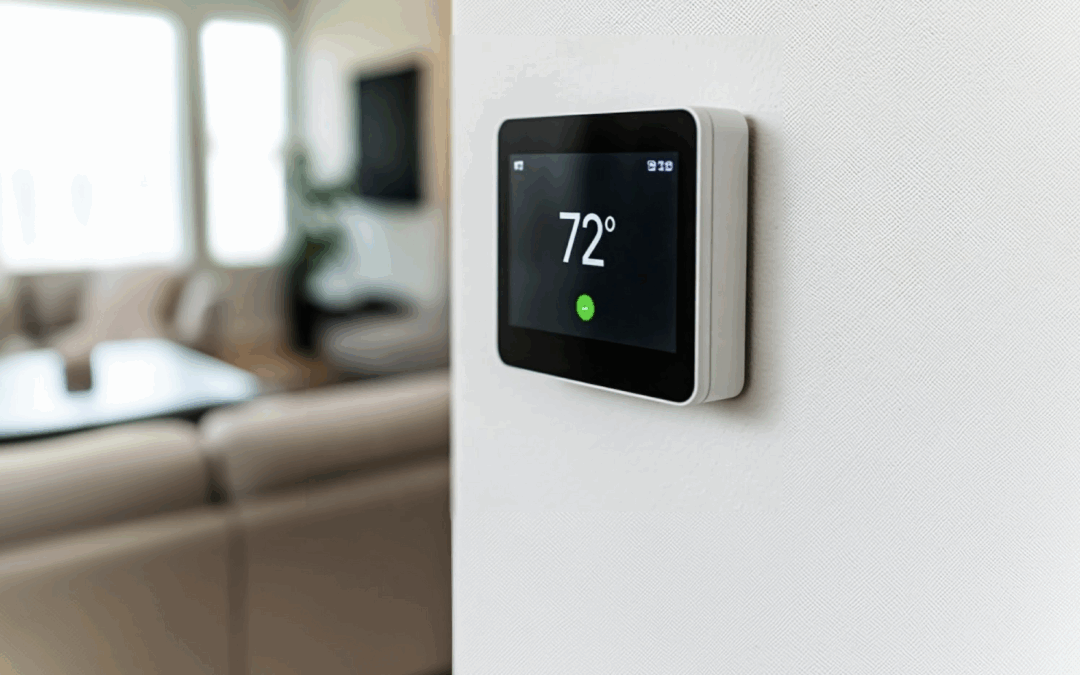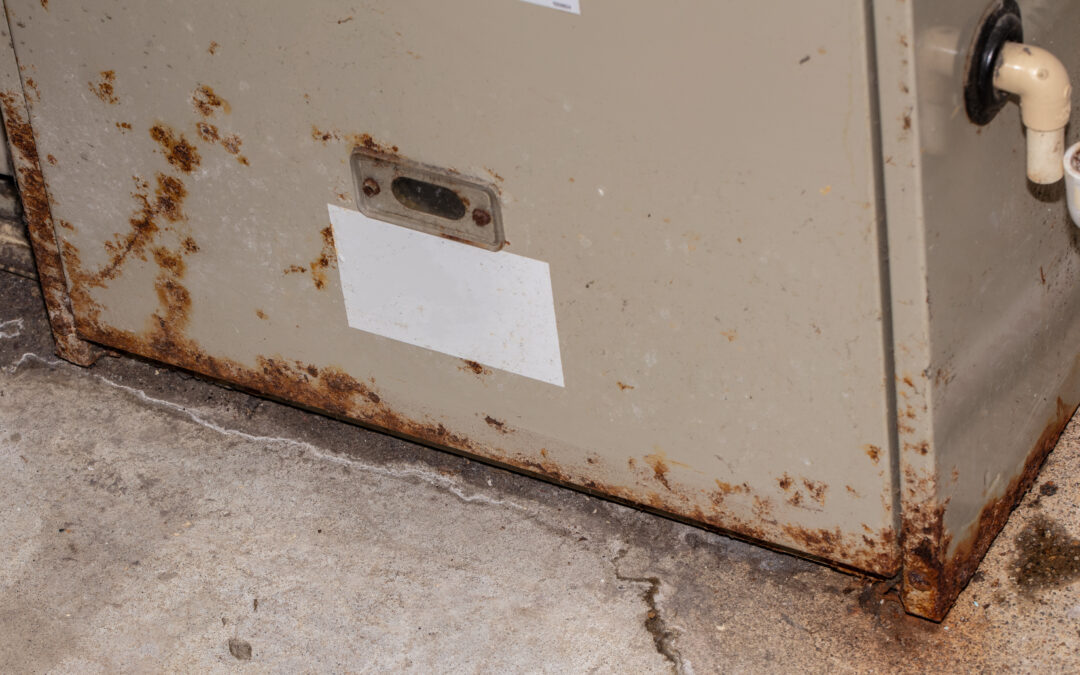
by Sabrina Cox | May 21, 2025 | Uncategorized
With the current May heatwave Houston has been facing, let’s have a moment of silence for our air conditioning units, because there’s no way we can survive the heat and humidity without them. A reliable air conditioning unit is essential for comfort and health in this climate. And with proper maintenance and smart upgrades you can significantly extend the lifespan of your AC unit, saving you money and avoiding inconvenient breakdowns. Continue reading as we discuss tips to keep your AC unit running longer and upgrades that will prolong the life of your unit.
If you want to prolong the life of your AC unit, follow the tips below:
Regular Maintenance Checks
Schedule professional inspections at least twice a year, once in the spring and once in fall. A technician will clean or replace filters, check condenser coils, inspect ductwork and blower components, check refrigerant levels, and identify issues early, before they become major problems.
Change Filters Frequently
Replace filters every 3 months, especially during the summer. Clean filters improve airflow and reduce strain on your system. This will also help you keep toxins and other allergens out of your home.
Keep Your Outdoor Unit Clear
Ensure the condenser unit is free of debris, leaves, and obstructions. Adequate airflow helps the unit operate efficiently and prevents overheating.
Set the Thermostat
Avoid setting the thermostat lower than necessary. Maintaining a consistent temperature reduces stress on your AC unit and conserves energy. Turning off your unit when you are not home is not the right solution because it pulls too much energy turning on. By properly setting the thermostat at a reasonable temperature, you are prolonging your unit while saving money.
Use Ceiling Fans
Ceiling fans help circulate cool air, allowing you to set the thermostat a bit higher. This reduces the workload on your AC.
Keep the Doors to Rooms Inside Your House Open
In many homes, certain rooms cool faster than others. By keeping bedroom doors open you are helping the air inside your home circulate and will keep your home cooler.
Check Your Doors and Windows For Leaks
Leaks in doors and windows amount to a significant loss of cool air, which is why it’s important to have them inspected annually. Caulk, which is used to seal small holes around the perimeter of your doors and windows, has a shelf life and needs to be replaced at least once a year. Sealing up all leaks will ensure that air conditioned air stays inside your home.
There are also several upgrades you can add to your current AC system that will help prolong its life and save you money.
Smart Thermostats
Smart thermostats save you money by allowing you to optimize your home’s temperature management and reduce energy consumption. Wonder how they do it?
- Precise Temperature Control
Smart thermostats enable you to set customized schedules that match your daily routine. By cooling only when needed, they prevent unnecessary energy use.
Many smart thermostats learn your preferences over time and automatically adjust settings for maximum efficiency, ensuring your HVAC system isn’t working harder than necessary.
- Remote Access and Adjustments
With a smartphone app, you can control your thermostat from anywhere. If you forget to set the temperature before leaving home, you can adjust it remotely.
Smart thermostats provide detailed reports on your energy consumption, showing areas where you can cut back and offering tips for saving money.
High-Quality Air Filters
Upgrade to higher MERV-rated filters to improve indoor air quality and reduce dust and debris that can clog your system.
Additional Insulation and Sealing
Enhance your home’s insulation and seal any leaks around windows and doors. Better insulation reduces strain on your AC by maintaining indoor temperatures more effectively.
Maintaining and upgrading your AC system is crucial for ensuring it stays efficient and reliable throughout Houston’s long, hot summer. By following regular maintenance practices such as changing filters, scheduling inspections, and keeping units clear, you can prevent many common issues that shorten an AC’s lifespan. Additionally, investing in upgrades like smart thermostats and proper insulation can significantly reduce wear and tear, helping your system function in optimal condition longer. If you are ready to make some upgrades to your current AC system, or have a question for our team, call the experts at JW East.

by Sabrina Cox | Apr 30, 2025 | Uncategorized
Welcome to spring, Houston! It’s the time of year when humidity and outdoor pollutants are everywhere, including inside our home. And that is why ensuring the quality of air we breathe indoors has never been more important. Homeowners are increasingly recognizing that the air inside their homes can be more polluted than the air outside. With a range of new indoor air quality products now available, we have the ability to create a healthier living environment. From advanced air purifiers to hospital grade media filters, these solutions not only enhance comfort but also contribute to better health and overall peace of mind. Continue reading as we discuss several new indoor air quality products available so you can decide if they are the right fit for your home.
Panasonic WhisperGreen Select Ventilation Fan
 Ideal for long, hot baths or showers, these fans are a significant improvement from your typical exhaust fan. Starting quietly at a low speed, they intelligently ramp up to top speed as humidity increases, then gently return to low once the moisture dissipates. Installation is seamless, fitting the existing space of older, louder units without requiring cosmetic work. Beyond bathrooms, they excel in laundry and mudrooms, effectively tackling odors from items like sports gear. Plus, they are Energy Star certified.
Ideal for long, hot baths or showers, these fans are a significant improvement from your typical exhaust fan. Starting quietly at a low speed, they intelligently ramp up to top speed as humidity increases, then gently return to low once the moisture dissipates. Installation is seamless, fitting the existing space of older, louder units without requiring cosmetic work. Beyond bathrooms, they excel in laundry and mudrooms, effectively tackling odors from items like sports gear. Plus, they are Energy Star certified.
Key Features:
- Customizable, all-in-one whole house precision ventilation solution ideal for use in the bathroom, laundry room, sun room, basement or garage
- Pick-A-Flow® Airflow Selector; features a built-in speed selector (50-80-110 CFM model) combined with SmartFlow™ technology simplifies the selection process and ensures optimum performance to meet code and reduce callbacks
- Environmentally friendly 26 gauge Zinc-Aluminum-Magnesium (ZAM) housing design
- Improved Flex-Z Fast™; single-hinge bracket with added flexibility, fast and easy
- Elegant grille design complements the aesthetics of any room
Panasonic WhisperAir Repair Ceiling- Mount Air Purifier
 Panasonic’s WhisperAir Repair keeps the air inside your home pure. This ceiling-mounted spot purification device uses patented nanoe X technology, generating charged water particles to purify your air. It inhibits the growth of gram-positive bacteria, viruses, mold, and allergens, while breaking down pollutants for a healthier home. This device also quietly deodorizes, reducing unwanted smells for a fresher, cleaner indoor environment.
Panasonic’s WhisperAir Repair keeps the air inside your home pure. This ceiling-mounted spot purification device uses patented nanoe X technology, generating charged water particles to purify your air. It inhibits the growth of gram-positive bacteria, viruses, mold, and allergens, while breaking down pollutants for a healthier home. This device also quietly deodorizes, reducing unwanted smells for a fresher, cleaner indoor environment.
“We are seeing a great market for these in residential bedrooms where babies, children, and those affected by allergies live. Couple this with a product like a Reme Halo Whole Home In Duct Air Purifier and you are on the path to a healthier home.” Says JW East owner, Jim East.
Dust Free Sixteen Media Filter
The top-performing Dust Free Sixteen air filter has a MERV 16 rating, effectively trapping microscopic particles such as smoke and bacteria.Its efficient design minimizes pressure drops, thereby optimizing HVAC system performance. With a long lifespan of up to three years, it also reduces maintenance requirements. Its versatile design allows for seamless integration into diverse residential and commercial HVAC systems.
 Key Features:
Key Features:
- High Efficiency: With a MERV 16 rating, it captures ultrafine particles, including smoke and bacteria, for superior air purification.
- Extended Life: Its filter is designed to last up to three years, reducing the need for frequent replacements.
- Durable: With its corrosion-resistant construction, it’s built to withstand various environments, enhancing durability and compatibility with many HVAC systems.
“This is hospital grade filtration for your home without reducing air flow, ” says East. “ With standard duct mounted media air filters that have to be changed once a quarter and at a cost of $35.00 each, this unit can go up to 3 years in some cases without a filter change. Better quality of filtration at a cheaper maintenance cost, you can not argue with that!”
As you can see, there are many new products available on the market to help with poor indoor quality. The JW East team would love to work with you to find the right solutions that fit your home. Call today to get started!

by Sabrina Cox | Mar 14, 2025 | Uncategorized
It’s already mid-March, and we Houstonians know that means that very soon the heat and high humidity will be here. And although we can’t do anything about our excessive heat, we can make sure that our HVAC system is running in optimal condition to keep us cool and comfortable during the summer. Continue reading as we explain why spring AC checks are important and how they can help combat humidity.
Why are spring AC checks important?
- Optimize Performance and Efficiency:
-
- Regular maintenance ensures that your AC unit runs efficiently, helping to keep energy bills in check during the high-demand summer months.
-
- Efficient systems are less likely to break down under stress, saving you from costly repairs and inconvenient service interruptions.
- Extend System Lifespan:
-
- Routine checks can identify small issues before they turn into major problems, prolonging the life of your AC system.
- Regular maintenance reduces wear and tear, maintaining optimal performance and longevity.
- Improve Indoor Air Quality:
-
- A well-maintained AC system can filter out dust, allergens, and other pollutants, contributing to healthier indoor air quality.
- This is particularly important during spring, when we get hit hard with pollen and other allergens.
- Address Humidity:
-
- High humidity levels can make even moderate temperatures feel uncomfortable. An efficient AC system is crucial for effective moisture control.
- A properly functioning system can prevent issues like mold growth and structural damage associated with excessive indoor humidity.
Houston is known for its high humidity, often causing discomfort for everyone inside the home and health issues. Ensuring that your AC system is equipped to manage these humidity levels will keep you comfortable during the summer. A well-maintained air conditioner can dehumidify the air, reducing the indoor moisture level and helping to avoid problems like mold growth, which thrives in humid environments.
“As humidity increases, so does the amount of water your HVAC system makes,” says Jim East, owner of JW East Mechanical. “The drain in your HVAC system sits dormant during the winter and fills up fast when the humidity starts. An overflowed drain line can cause serious problems, like your entire roof caving in. Regular HVAC maintenance during the spring is key to making sure things like this don’t happen.”
What all should a spring HVAC check include?
- Inspecting and Changing Air Filters: Ensure the air filters are clean and replace them if necessary. This helps maintain good air quality and efficient airflow.
- Inspecting Thermostat: Check the thermostat settings and make sure it’s functioning correctly to maintain comfort and energy efficiency.
- Checking Refrigerant Levels: Ensuring the refrigerant levels are correct can help your system operate efficiently and prevent larger issues down the line.
- Inspecting and Cleaning Condenser Coils: Clean condenser coils improve the system’s efficiency by aiding heat transfer.
- Inspecting Ductwork: Checking for leaks or blockages in the ductwork can help improve indoor air quality and system efficiency.
- Inspecting Electrical Connections: Tightening connections and checking for faulty wiring can prevent larger electrical issues in the future.
- Checking System Controls: Testing the starting cycle, operation, and shut-off sequence helps ensure the system is working properly.
- Inspecting and Cleaning Blower Components: Cleaning the blower components can improve airflow and efficiency.
- Checking for Any Unusual Noises or Odors: Identifying and addressing any unusual noises or odors can prevent potential breakdowns.
Scheduling a spring HVAC check is a proactive step towards ensuring a comfortable, efficient, and healthy home environment throughout our sweltering summers. By scheduling your spring AC check, you can enjoy peace of mind knowing your system is prepared to tackle the heat and humidity. Call us and schedule your spring AC check!

by Sabrina Cox | Feb 17, 2025 | Uncategorized
Can you believe we are halfway through February? We have already seen so many different types of weather this year, including the unexpected snow! And as we have to deal with our ever-changing weather we also have to deal with another issue: cold and flu season. While many focus on flu shots and other preventive measures, one crucial aspect often overlooked is the quality of the air we breathe indoors. Poor indoor air quality can intensify respiratory issues and can create an optimal condition for viruses like the flu, RSV and the common cold to grow and spread. Making sure your home has proper ventilation, effective air filtration and humidity control will not only keep your home comfortable, but will also keep everyone inside it safe and healthy. Continue reading as we discuss the different ways you can protect the quality of your indoor air during cold and flu season.
Let’s begin with discussing the health impacts that poor indoor air quality can have on your health:
Respiratory Issues: Poor air quality can aggravate issues like asthma, bronchitis, and other respiratory illnesses, leading to increased symptoms like coughing, wheezing, and shortness of breath.
Allergic Reactions: High levels of allergens, such as dust mites, mold spores, and pet dander, can trigger allergic reactions, causing symptoms such as sneezing, nasal congestion, and skin irritations.
Increased Risk of Infections: Contaminated air can contribute to the spread of airborne viruses and bacteria, increasing the likelihood of infections, particularly respiratory infections.
Fatigue and Headaches: Poor air circulation, high levels of carbon dioxide, and the presence of volatile organic compounds (VOCs) can lead to fatigue, headaches, and overall discomfort.
Dizziness and Nausea: Exposure to harmful pollutants and chemicals in the air can cause dizziness, nausea, and even cognitive difficulties, affecting concentration and productivity.
Long-Term Health Effects: Prolonged exposure to indoor air pollutants can contribute to long-term health issues, including chronic respiratory diseases, heart disease, and even certain types of cancer.
Worsening Mental Health: Poor indoor air quality has been linked to increased stress levels and decreased mental clarity, potentially impacting overall mental well-being.
Now that we understand what can happen to our health if we live in a home with poor indoor air quality, we will explain what you should do to keep the air inside your home healthy.
Ventilation: Even in winter, it’s important to ventilate your home. Open windows on warmer days to allow fresh air in, and use exhaust fans in kitchens and bathrooms to reduce moisture and odors.
Use Air Purifiers: Invest in a high-quality air purifier with a HEPA filter to capture allergens, dust, and other pollutants in the air. This is especially beneficial if anyone in your home suffers from allergies or asthma.
Maintain Humidity Levels: Use a humidifier to keep indoor humidity levels between 30-50%. Also, check out our blog post (LINK) where we discuss indoor humidity and how to keep it under control inside your home.
Regular HVAC Maintenance: Schedule maintenance for your heating system, including changing filters regularly. Clean filters help improve airflow and reduce dust and allergens in your home.
“We work with many Aprilaire products and I always recommend their air filters to my customers, ” says JW East Mechanicical owner Jim East. “They have a new super air filter with a MERV 16 rating and will last three years. It’s a hospital grade filter and is a good option if someone in your home has asthma. For example, a filter with a MERV 6 or 7 rating will only last one year.”
Control Dust Accumulation: Dust and vacuum frequently to reduce allergens. This helps keep the quality of your air clean and healthy.
Check for Mold: Regularly inspect areas prone to moisture, such as bathrooms and kitchens, for mold growth. Address any leaks quickly and use dehumidifiers in damp areas to prevent mold growth.
We understand that people are going to get sick, but by following the advice listed above you can keep the indoor air inside your home clean, and this in turn will keep everyone inside your home healthier. If you have questions or concerns about the quality of the air inside your home, call the experts at JW East Mechanical.

by Sabrina Cox | Jan 7, 2025 | Uncategorized
When it comes to maintaining a comfortable home, the size of your air ducts plays a big role in the efficiency and effectiveness of your HVAC system. Unfortunately, many homeowners may not realize that their ductwork is too small until they start living with uncomfortable temperatures, high energy bills, and poor indoor air quality. Having the correct size air ducts in your home is a must. And understanding the implications of having air ducts that are too small for your home is essential for making sure you stay comfortable all year long.
There are seven major issues you will face if your home has incorrectly-sized air ducts:
- Poor Airflow
Small air ducts restrict the amount of air that can flow through the HVAC system. This leads to inadequate airflow, making it difficult for the HVAC unit to distribute conditioned or heated air evenly throughout the home. As a result, some rooms may feel uncomfortably warm in summer, while others may stay cold in winter.
- Increased Energy Costs
When air ducts are too small, the HVAC system has to work harder to push air through the restricted pathways. This increased workload causes your system to use more energy because the system has to run longer and more frequently to get to and maintain the desired temperature. This overuse of energy will cause a big increase in your monthly bill.
- Uneven Temperatures
A common complaint among homeowners with small air ducts is uneven temperature distribution. Rooms that are farther away from the HVAC unit may receive less conditioned air, leading to significant temperature differences within the home. For example, bedrooms may be warmer than the living room, or one room might not get as cool or warm as the room next to it.
“When your air ducts are undersized it doesn’t matter how much power you have coming out of your system, your home will not be able to cool or heat correctly,” says Jim East, owner of JW East Mechanical. “This is a very common issue we come across in houses that complain about lack of airflow. Once we fit a house with the correct size air ducts, it revitalizes the entire system by changing the air delivery.”
- Increased Wear and Tear on HVAC Equipment
The strain of pushing air through undersized ducts increases wear and tear on the HVAC system. Continuous operation under stress can lead to frequent breakdowns, costly repairs, and even premature system failure. Homeowners may find themselves needing to replace their HVAC systems sooner than expected due to the increased stress caused by inadequate duct sizing.
- Poor Indoor Air Quality
Small air ducts keep your HVAC system from properly filtering and circulating air, which can lead to a decline in indoor air quality. Dust, allergens, and other pollutants can accumulate in stagnant parts of the home and recirculate, causing allergies and respiratory issues for anyone living inside the home, especially children and the elderly. Poor airflow can also trap moisture in specific areas, leading to mold growth and other humidity-related problems. As Houstonians, humidity-related issues are very common in our homes, which is why we need to do everything possible to keep it under control.
- Noise Problems
When air is forced through small ducts, it creates high-velocity airflow resulting in increased noise levels. Homeowners might notice loud sounds coming from their vents or rattling noises as the system struggles to deliver air. As you know, any strange sound coming from your HVAC system is a sign that something isn’t working as it should, and loud noises are often the first sign a homeowner notices if their air ducts are the incorrect size.
- Humidity Control Issues
Maintaining proper humidity levels is crucial for our comfort and the overall health of our home. Small ducts limit the system’s ability to dehumidify the air, which leads to higher humidity levels indoors. And the last place we want humidity is inside! Indoor humidity creates a sticky and uncomfortable home, and also makes a perfect environment for mold growth.
If you notice any of the symptoms above and think your home might have undersized air ducts, call the experts at JW East Mechanical. We have years of experience and can help get your house working again in optimal condition.

by Sabrina Cox | Nov 11, 2024 | Uncategorized
As Houstonians, we know how our winters work – cold for 3 days and then hot for a week. But during those 3 days of cold, we all rely on the furnace to keep us warm. And just like having your air conditioner checked in the spring, it’s just as important to have your furnace checked in the early fall to make sure it’s working correctly.
But then the annual furnace check slips to the bottom of the to-do list – which is easy since we don’t use the furnace very often. But it’s when we forget that things start to go wrong. So how do you know if your furnace is starting to go downhill? There are many signs that are visible to HVAC technicians, but to the average homeowner recognizing the more technical signs can be difficult. But not to worry because if you follow the advice listed below you will be able to understand your furnace almost as well as a licensed JW East Mechanical technician (well, not quite!).
According to the experts, the life of a furnace depends on what make and model you purchase and what type of warranty you have. Different parts of the furnace will have a different warranty and some will last longer than others. Heat exchangers usually have a 20-year warranty, but the blower and control boards have around a 5-year warranty. All this depends on usage and maintenance. Knowing when to replace your whole furnace or just some of its parts all depends on what is breaking down and the age of your furnace.
How do I know if my furnace isn’t working correctly?
If you make a point to pay attention to the age of your furnace and the way it responds when turning on and off, you will be able to detect certain signs that are indicators of it not working correctly. Your furnace might need replacement if:
You hear funny noises: When you turn your furnace on and off you can expect to hear some noise, but if you hear excessive rattling, popping, or banging coming from your unit, you have a problem. Noises are an indicator that your furnace or certain parts of it are about to give out. As soon as you hear these strange sounds it is important to call in a professional because the longer you wait, the more damage will be done to your furnace and other parts of your HVAC system.
You smell strange odors: A slight smell is to be expected when you turn on your furnace for the first time during the winter. But if the smell doesn’t go away and seems to get stronger as the days go by, there is an issue. Burnt smells, musky smells, and other off-putting odors are your furnace warning you that parts of it are not functioning properly. The problem might be with the blower or the motor, and the only way to tell is to have a licensed HVAC technician check it out.
Your furnace is old: Maybe you have had your furnace for over 10 years and have never had a major problem with it. However, just because you have never had a problem doesn’t mean you won’t, especially as it ages. As your furnace gets older its parts are no longer able to work as efficiently as they once did. And because of its age you might wake up one morning and find that your furnace completely stopped working while you were asleep. We recommend having your furnace checked out if it is older, even if you have had no problems. It is better to be safe and warm than to take the chance and be cold.
You notice higher bills: Different parts of your furnace use up different amounts of electricity. The blower motor and fan use up a lot, especially if they are about to break down. If you notice your electric bill is exceptionally high, the problem could be that these parts are about to go out and are pulling more amps than they should.
We understand there is a significant cost associated with replacing your entire heating system, but replacing your old and inefficient unit can actually save you money in the long run. With a new furnace you can expect:
Increased Energy Efficiency: Newer furnace models are designed to be more energy-efficient, often with higher AFUE (Annual Fuel Utilization Efficiency) ratings. This means they convert a larger percentage of fuel into usable heat, which can lower your energy bills.
Reduced Repair Costs: Older furnaces often require more frequent and costly repairs. By replacing an aging unit, you can reduce the likelihood of unexpected repair expenses and enjoy peace of mind.
Rebates and Incentives: Many utility companies and government programs offer rebates or incentives for upgrading to energy-efficient systems. This can offset some of the initial costs of the replacement.
Enhanced Indoor Air Quality: A new furnace often comes with an improved air filtration system that can reduce allergens and pollutants in your home. Better air quality can lead to fewer health issues, reducing healthcare costs.
Longer Lifespan: A new furnace typically has a longer lifespan (15-20 years) compared to an older unit. This means you won’t have to worry about replacing it again for many years, giving you stability in budgeting.
Smart Technology Integration: Many new furnaces feature smart technology that allows for programmable thermostats and remote monitoring. This can help you manage heating more efficiently, further reducing energy costs.
You might not be a professional HVAC technician, but if you know what to look for you can be aware of a potential problem before it becomes serious. If you notice any of the signs listed above, call a professional to come take a look. Our HVAC technicians are thoroughly trained to detect even the smallest problem and can help you decide if replacing your furnace is the best option for your household.



 Ideal for long, hot baths or showers, these fans are a significant improvement from your typical exhaust fan. Starting quietly at a low speed, they intelligently ramp up to top speed as humidity increases, then gently return to low once the moisture dissipates. Installation is seamless, fitting the existing space of older, louder units without requiring cosmetic work. Beyond bathrooms, they excel in laundry and mudrooms, effectively tackling odors from items like sports gear. Plus, they are Energy Star certified.
Ideal for long, hot baths or showers, these fans are a significant improvement from your typical exhaust fan. Starting quietly at a low speed, they intelligently ramp up to top speed as humidity increases, then gently return to low once the moisture dissipates. Installation is seamless, fitting the existing space of older, louder units without requiring cosmetic work. Beyond bathrooms, they excel in laundry and mudrooms, effectively tackling odors from items like sports gear. Plus, they are Energy Star certified. Panasonic’s WhisperAir Repair keeps the air inside your home pure. This ceiling-mounted spot purification device uses patented nanoe X technology, generating charged water particles to purify your air. It inhibits the growth of gram-positive bacteria, viruses, mold, and allergens, while breaking down pollutants for a healthier home. This device also quietly deodorizes, reducing unwanted smells for a fresher, cleaner indoor environment.
Panasonic’s WhisperAir Repair keeps the air inside your home pure. This ceiling-mounted spot purification device uses patented nanoe X technology, generating charged water particles to purify your air. It inhibits the growth of gram-positive bacteria, viruses, mold, and allergens, while breaking down pollutants for a healthier home. This device also quietly deodorizes, reducing unwanted smells for a fresher, cleaner indoor environment. Key Features:
Key Features: 


